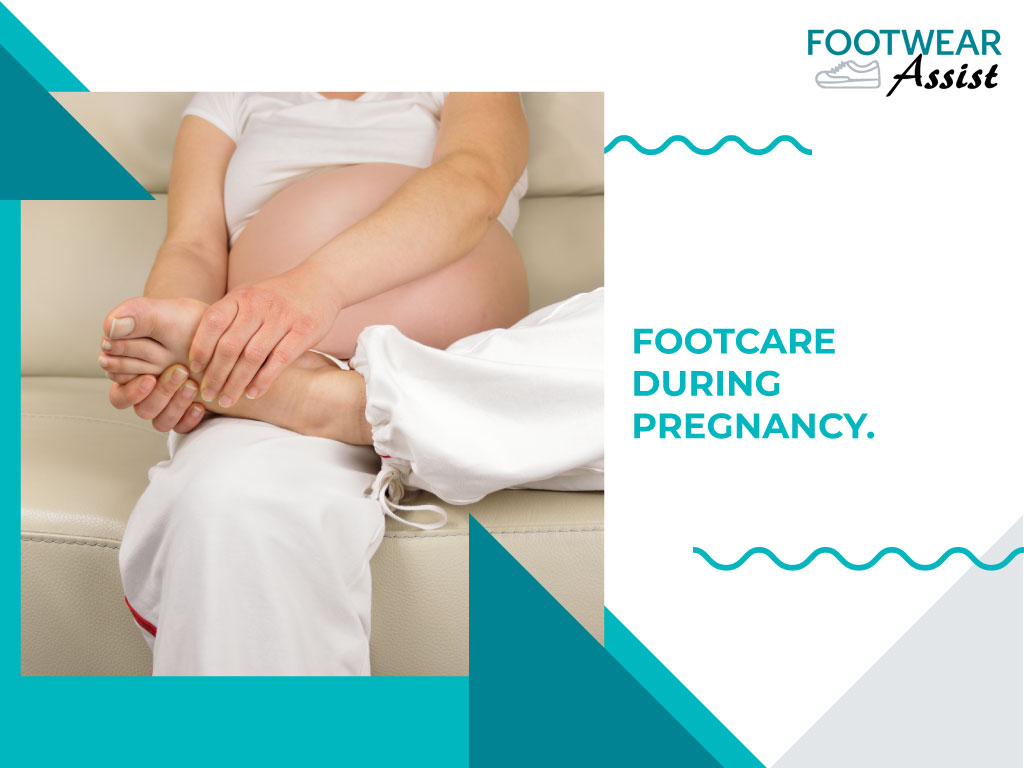When you’re pregnant, your body goes through a lot. You’re growing a baby and your hormones are going haywire. It’s a lot to handle! But did you know that one thing can make your pregnancy even more difficult? Foot problems. In this blog, we’ll discuss the most common foot problems during pregnancy, and offer some solutions, as well as suggestions for aid devices, like the Footwear Assist.
The Most Common Foot Problems During Pregnancy
Pregnant women often experience discomfort in their feet, and it can be a big problem.
Common foot problems experienced by pregnant women include feet flattening and arching (pronation) and swelling in the feet (oedema).
Flattening of the feet and arching (pronation) is caused by increased weight and pressure on your joints during pregnancy, which can cause the joints to become less flexible. Pronation causes pressure on your ankles, knees, hips, back and shoulders. It also increases stress on your ligaments that connect your toes to your foot bones.
Swelling in the feet (oedema) is caused by fluid retention due to hormonal changes during pregnancy. Swelling usually occurs in late pregnancy or during labor/delivery because of increased blood flow to the lower legs and feet during labor/delivery as well as during pregnancy itself due to increased blood volume needed for baby growth and development as well as increased blood volume needed for mother’s body tissue growth and development in preparation for birth.
Managing Pronation During Your Pregnancy
If you’re pregnant, chances are you’ve been trying to deal with the discomfort of flat feet. While flat feet are common and don’t cause any problems for most people, they can be a real pain when you’re carrying a baby.
There are a few things you can do to manage the pain of flat feet during pregnancy:
1. Take it easy
If your feet hurt, don’t force them to do anything that would make them hurt more. Walking around in flip-flops is fine, but don’t try to walk long distances or run in them unless you want an extra soreness in your toes and heels.
2. Wear good shoes
Flat feet can make it hard for your shoe straps to stay on securely (and they’ll definitely slip off when they’re wet). So if you want to wear sandals during pregnancy, get ones with Velcro straps so they won’t slip off while you’re walking around the beach or town!
3. Use insoles
Insoles are designed specifically for people with flat feet, so they’ll help alleviate pressure points and make shoes more comfortable to wear—which means fewer blisters on your feet. They can also help raise your arches.
Managing Oedema During Your Pregnancy
Pregnant women suffer from a lot of physical changes, and swollen feet is one of the most common.
When you’re pregnant, your blood volume increases by about 50% to support your growing baby. This means that your heart has to pump more blood throughout your body, which can cause fluid to pool in your lower extremities (your ankles, wrists, and hands). In some cases, this swelling can be uncomfortable and hard to manage.
Fortunately, there are ways to deal with swelling feet during pregnancy:
1) Wear supportive shoes with good arch support.
2) Elevate your feet as often as possible. If you have to sit for long periods of time, place a small stool by your feet to elevate them.
3) Wear seamless socks that do not constrict circulation
4) Take time each day to stretch out your legs and ankles
Assistive Tools For an Easier Pregnancy
Pregnancy is a challenging time, and not just because you’re carrying a baby. You have to deal with all kinds of physical limitations, like swollen feet and ankles, sore muscles, and a protruding pregnancy belly, which can make things like bending down or reaching your feet difficult.
But there are ways to help make that easier! One option is the Footwear Assist, which lets you put on shoes without bending over or sitting down. This means that you can minimize the risk of falling (or sitting awkwardly) while still getting comfortable shoes on — and making life easier for yourself in the process.
Throughout your pregnancy, it’s important to take care of your feet. During this time, they’re likely to swell and become more susceptible to injury. You may also experience pain or discomfort in your feet due to increased weight, changes in posture, and new pressure points on your feet. There are many things you can do to help relieve pain and swelling and prevent injury so that you can focus on enjoying the experience of your growing family. With the Footwear Assist, you can easily reach your feet, allowing you to put your shoes or socks on with ease.

